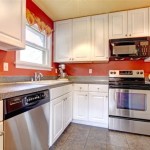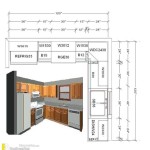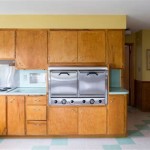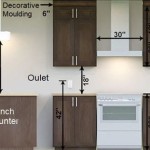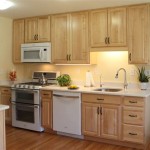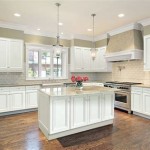Essential Aspects of Tiling Behind Kitchen Cabinets
Tiling behind kitchen cabinets is a crucial decision that can significantly impact the aesthetics, functionality, and durability of your kitchen. Understanding the essential aspects to consider ensures you make an informed choice that meets your specific needs and requirements.
This article delves into the key aspects to keep in mind when deciding whether or not to tile behind kitchen cabinets. We'll explore the benefits and drawbacks, as well as factors like budget, style, and maintenance considerations. By providing comprehensive information on each aspect, our aim is to empower you with the knowledge and tools necessary to make the best decision for your kitchen.
1. Aesthetics
Tiling behind kitchen cabinets adds a touch of visual interest and can complement the overall design scheme of your kitchen. Tiles come in a wide array of materials, colors, and patterns, allowing you to customize the look to your preference. They can create a cohesive and stylish backdrop for your countertops and appliances, enhancing the aesthetic appeal of your kitchen.
2. Functionality
Tiles offer a practical solution for protecting the wall behind kitchen cabinets from splashes, spills, and grease. By creating a durable and easy-to-clean surface, tiles help prevent damage to the wall and make it easier to maintain a clean and hygienic kitchen. Additionally, tiles can provide an extra layer of insulation, helping to regulate the temperature in your kitchen.
3. Durability
Tiles are known for their durability and longevity. They are resistant to moisture, heat, and wear and tear, making them an ideal choice for the demanding environment of a kitchen. Proper installation ensures that tiles remain intact for many years, providing lasting protection and functionality in your kitchen.
4. Budget
Budget is an essential factor to consider when deciding whether to tile behind kitchen cabinets. While tiles themselves can be relatively affordable, the cost of installation can vary depending on the complexity of the project. It's important to factor in the cost of materials, labor, and any additional preparation or repairs that may be necessary.
5. Maintenance
Maintaining tiled walls behind kitchen cabinets is relatively straightforward. Regular cleaning with mild detergent and water is typically sufficient to keep them looking their best. However, it's important to use non-abrasive cleaning materials to avoid scratching or damaging the tile surface.
6. Style
Tiles can complement a wide range of kitchen styles, from traditional to modern. Whether you prefer classic subway tiles, rustic stone tiles, or sleek glass tiles, there's a tile option to suit your taste. By carefully selecting tiles that complement your existing decor, you can create a cohesive and inviting kitchen space.
7. Installation
Professional installation is recommended for tiling behind kitchen cabinets to ensure a secure and durable installation. A skilled installer will ensure proper preparation of the wall surface, even application of tiles, and precise grouting. This attention to detail will result in a long-lasting and visually appealing tile installation.

Do You Want To Put Tiles Behind The Cabinets Will Know After Reading This Article Zibo Honor Ceramic

Where Should My Kitchen Backsplash Start And Stop

Is A Backsplash Necessary In Kitchen The Truth

Mistakes Everyone Makes When Putting In A Kitchen Backsplash

Is A Kitchen Backsplash Necessary Norfolk Bath

Is A Kitchen Backsplash Necessary Norfolk Bath

How High Should A Tiled Kitchen Spashback Be Making Your Home Beautiful

21 Tile Backsplash Behind A Stove Ideas To Add Color And Style Kitchen Designs Tiles

Kitchen Tile Backsplash Why You Should Take It All The Way Up To Ceiling

Should You Install Tile Floor Before Or After Cabinets
Related Posts


